Fake Ysart Glassware
As with all antiques, increasing popularity spawns attempts to produce fakes. With Ysart Glass, this started in the eighties: grinding down Strathearn pontils, or grinding and polishing Vasart bases to make them appear like Monart. By the 1990’s some highly skilled glassblowers began to make deliberate fakes: first were miniatures vases that came complete with fake labels (see the example on the labels page). In general, the colours and the quality give them away. Gaining complete familiarity with Monart ware is the best way to detect them. Unfortunately, they are usually sold to collectors who are just starting out. Dominic Purdue has produced the chart below to give some guidance to other collectors on the major differences between the different types of Ysart glassware and the fakes. Some examples are shown below the table. The fake ‘PY’ paperweights, which first appeared in the late 1980’s, are addressed on separate pages on this site.
It has been suggested that some pieces were made at well known glassworks in the area, but outside normal hours. Several people were reported to be involved and, sadly, the fakes are improving in quality, which implies involvement of a fairly skilled glass blowing team. If only they turned their skill to producing original pieces perhaps they would develop fame. Their current path will lead to prison once some hard evidence is found. If you have any information on this, or if you have bought a fake, please let us know and go to the police.
Fake Tulip Lamps
c. 1987 Perthshire Glass were making TULIP lamps at £65.00 each. Unfortunately, a local dealer purchased a large quantity without fittings and put 1950’s fittings into them so he could sell them as Vasart. The most obvious way of detecting them is that the cable entry is drilled instead of hot-pierced, or the rim has a ground channel compared to the real thing with a lifted rim to the foot. Genuine Vasart Tulip lamps are relatively common and the Perth varieties are probably rarer now! Strathearn also made these lamps but it is very unlikely to find them with the Leaping Salmon seal. Currently the only sure way of identifying them would be the presence of a VASART label. A good area for a specialised study...?
A Table Comparing Monart, Vasart, Strathearn, Perthshire and the Fake Glassware
|
|
Feature
|
Monart
|
Vasart
|
Strathearn
|
Perthshire Paperweights copies
|
Fakes
|
|
Mottles in body colour
|
Where distinct, are opaque with clear glass between them.
|
Merged into a mesh or web appearance.
|
As Vasart mostly but may be distinct opaque, or translucent, with coloured glass between them.
|
Merged mottles indistinct and opaque, sometimes meshlike. If glass seen between mottles it is likely coloured.
|
Distinct opaque with clear glass between them.
|
|
Pontil Mark
|
Large, unless an early piece. Very variable in appearance.
|
Small and fairly constant in appearance.
|
Small added pontil, usually with a leaping salmon motif but this is often missing.
|
Small or absent, but large added clear glass pontils have been seen.
|
Small usually but later fakes have generous pontil marks.
|
|
Polished Ring around Pontil
|
Yes, unless an early or surface decorated piece.
|
No, but sometimes roughly ground.
|
No.
|
No.
|
No.
|
|
Glass Rings when Flicked
|
Short dead ring usually high pitched. Can be slightly more prolonged.
|
Yes and no. Later glass does ring well but early glass sounds like Monart.
|
Yes.
|
No.
|
Yes.
|
|
Glass Thickness
|
Glass is usually thick.
|
Glass is generally thinner than Monart.
|
Glass is thinner than Monart.
|
Glass is usually thick.
|
Glass is thinner than Monart.
|
|
Catalogue Shape
|
Yes, unless a lamp or one off Piece. Be suspicious of non catalogue shapes.
|
No, but similarities exist.
|
As Vasart.
|
No.
|
Not quite (see fake examples).
|
|
Colour Scheme and Appearance
|
Deep colours mostly (except some post war). Recognised and pleasing schemes. Aventurine often used.
|
Pastel colours (except some very early pieces). Simple colour schemes, technically well executed but lacking something. Aventurine in early pieces.
|
Deep colours. Swirls often lost due to bad colour contrast. Reds always translucent. Glossy glass.
|
Light colours too bright. Aventurine often used. Glossy glass.
|
Light colours too bright. Unusual colour combination. Aventurine rarely used. Glossy glass.
|
|
Surface decoration uncased outer
|
Yes (rare).
|
Yes
(very rare).
|
Yes
(very rare).
|
No.
|
Not seen.
|
|
Signed and/or Labelled
|
Not signed unless for export (rare). Labelled: Different types. See labels page.
|
Signed unless a late piece. Early pieces also had circular white label, black print. Late pieces had black and silver narrow labels with arch in centre.
|
Paper labels and/or Leaping Salmon impressed in Pontil button.
|
Sometimes has letter ‘P’ vaguely impressed.
|
No.
|
|
Examples of Faked Ysart Glassware
|
|
This is probably a fake ‘Vasart Scotland’ signature as it is found on a piece of Monart!
|
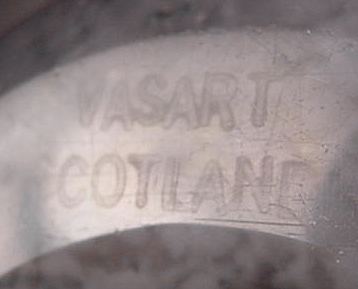 |
|
The first fake Mushroom lamps appeared in the 1990’s described as Vasart; in 2000 the quality improved and they started to be sold as Monart. Commonly available from a particular shop, now closed, in Perth they are now usually found at antique fairs.
|
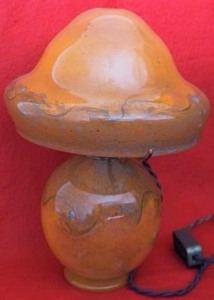 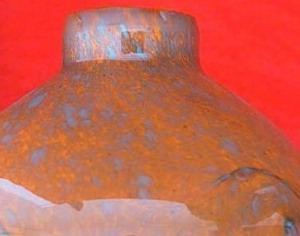
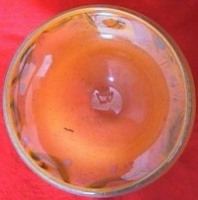 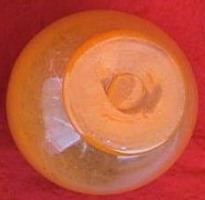
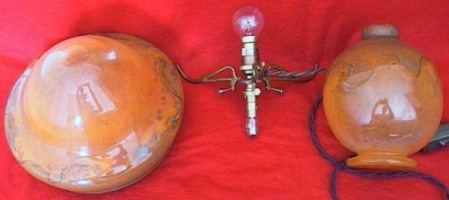
|
|
More examples: note the texture of the colour. The green one has aventurine in it.
|
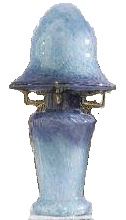 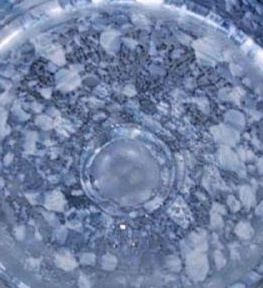 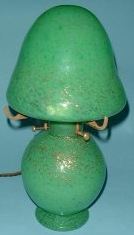
|
|
The next lamp has a fitting made in the same way but the glasswork is much cruder.
|
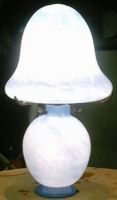 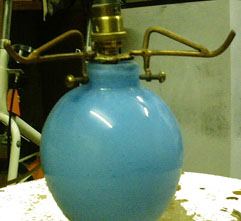 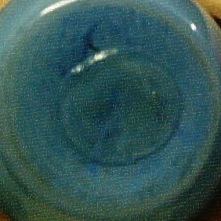
|
|
Typical fake vase. Note the intensity of the colour. The open bubble on the pontil is often cited as typical, but has been seen on Monart and Vasart - perhaps be more common on fakes? Perhaps a glassmaker could comment on this.
|
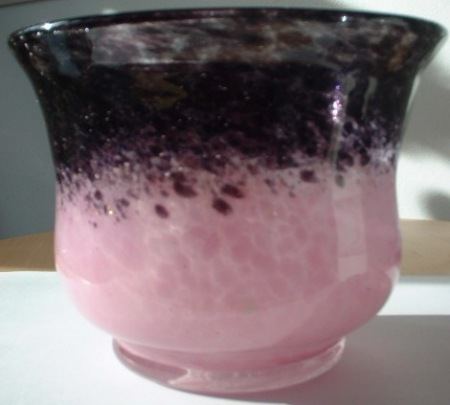
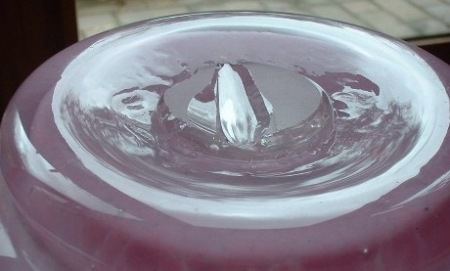
|
|
Another fake vase. Sold by a Perth dealer as Monart; shop now closed. Rings like a bell when tapped.
|
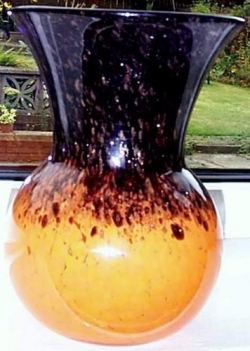
|
|
|














